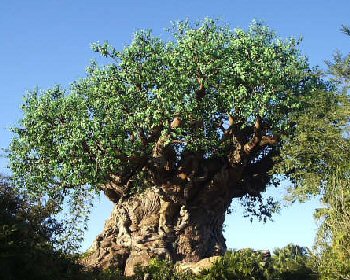This post may contains affiliate links for your convenience. If you make a purchase after clicking a link we may earn a small commission but it won’t cost you a penny more! Read our full disclosure policy here.
From Our Magically Speaking Newsletter Archive – subscribe today!
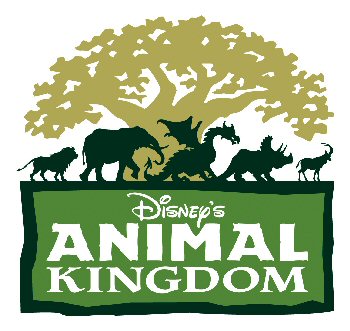
This issue, we offer some fun (and informative) facts from Disney about Disney’s Animal Kingdom.
- In preparation for creating Disney’s Animal Kingdom, a core team of seven Walt Disney Imagineers, led by executive designer Joe Rohde, crisscrossed the globe in search of the essential look of life in the wild, amassing more than 500,000 miles . . . a distance equal to circling the globe 20 times.
- Sixty dump trucks of dirt were delivered to Disney’s Animal Kingdom construction site every day for two years straight, equaling 4.4 million cubic yards of dirt.
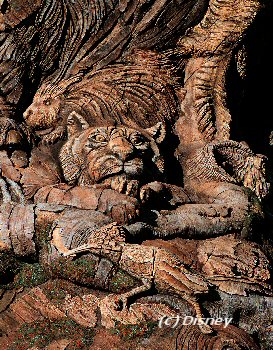
- Ten artists and three Imagineers worked full-time for 18 months to create the 325 animal carvings on The Tree of Life. Sculptors had between six and 10 hours to create the finished image before the plaster hardened.
- The Tree of Life is topped with more than 103,000 transparent, five-shades-of-green leaves that actually blow in the wind.
- Some 1,500 2-to-3-foot long fanciful hand-painted wooden folk art animal carvings — a fusion of pre-Columbian, Peruvian, African and Polynesian forms — were crafted on the island of Bali by native craftsmen, and can be seen adorning the architecture of Discovery Island.
- More than 4 million trees, plants, shrubs, ground-covers, vines, epiphytes and grasses from every continent on Earth — except Antarctica — were planted.
- The largest tree replanted in the park is located in Harambe village, and tipped the scales at 90 tons . . . that’s equal to the weight of 16 male elephants.
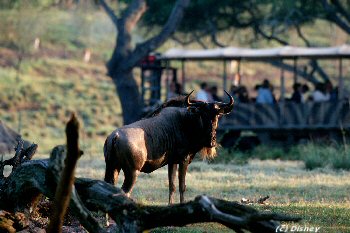
- Planting Kilimanjaro Safaris was a challenge. With a ride-through attraction and live animals roaming about, planting patterns were based on what designers thought the animals would do, and what the guests will experience. Paul Comstock, principal landscape architect, laid out the plant bed lines on a motorcycle (using spray paint) riding at the same speed as the ride vehicle, “because guests will experience the landscape at that speed,” he said.
- The rutted safari road also is part of the landscape design. Imagineering’s design team matched concrete with the surrounding soil, then rolled tires through it, and tossed stones, dirt and twigs into it to create an appropriately bumpy experience duplicating a remote African road.
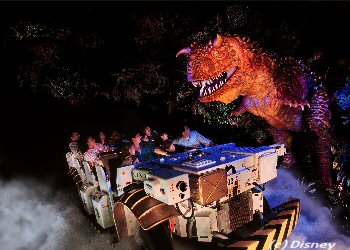
- In order to support the incredibly large and sophisticated dinosaur Audio-Animatronics at DINOSAUR in DinoLand U.S.A., their dino-size bases were built clear through the structure down to their own large foundations in the ground.
- There’s one million square feet of rockwork at Disney’s Animal Kingdom . . . that’s twice the volume of rockwork in the Mt. Rushmore sculptures or a volume that could create a monolith 10 feet by 10 feet by two miles high.
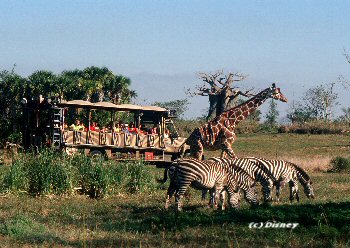
- To keep 1,000 animals happy takes about four tons of food a day . . . that’s a four-and-a-half year supply for the average person.
- There are 27 million gallons of water in Discovery River . . . that’s an amount equal to 1,800 average-sized backyard swimming pools.
- There are 2.6 million gallons of water contained in various water features that come in contact with animals. On average, the entire volume of water is treated and filtered five times daily, which means that 15.6 million gallons of water are treated and filtered every day.
- The cycad collection along Cretaceous Trail in DinoLand U.S.A. represents the third largest such collection in North America, including direct descendants of the four botanical epochs of plant evolution dating back hundreds of millions of years, including ferns, mosses, conifers, broadleaf plants and the first flowering plants on earth.
- Like a snapshot from an African safari, towering acacia trees and tall grasses paint a familiar picture of the Serengeti on a vast stretch of rolling landscape, but this is Central Florida, not east Africa, and the acacias are really 30-foot-tall Southern live oaks with a close-cropped crew cut.
- Company founder Walt Disney’s love of animals began when he was four years old and his family moved from his Chicago birthplace to a 45-acre farm in Marceline, Missouri, where he helped take care of farm animals, as well as learned to draw pictures of his animal friends.
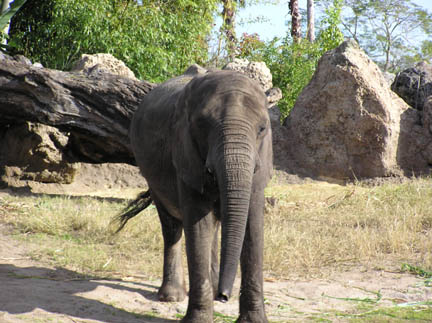
- Disney’s Animal Kingdom is home to the largest groups of Nile hippos and African elephants in North America.
- The first birth at Disney’s Animal Kingdom was a kudu, a large African antelope.
- The number of species that have reproduced since the park opened is more than 150.
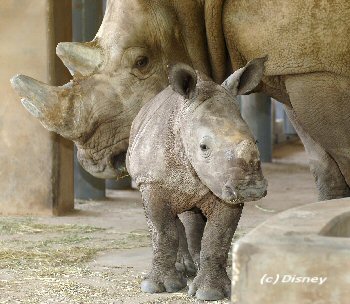
- Six Micronesian Kingfisher chicks were hatched at Disney’s Animal Kingdom, raising the world population of these birds by 9 percent.
- The arrival of two black rhino calves born at Disney’s Animal Kingdom made them two of only 200 in captivity worldwide.
- Animal Programs veterinarians have successfully performed surgery on a tarantula spider, placed an artificial eye in a fish and removed a golf ball from a hungry snake rescued at a Disney golf course.
- The Animal Programs team performs more than 600 wellness checks per year.
- Lab technicians have analyzed more than 10,000 samples of animal poop since Disney’s Animal Kingdom opened.
- More than 2,000 pounds of vegetation and browse is fed to the animals every day, and several varieties of worms are provided to the animals, including super mealworms, yellow mealworms, red wigglers, night crawlers and wax worms — 40,000 in a week! Dieticians also order 80,000 crickets per month as part of the healthy diet for the animals.
- Disney Animal Kingdom scientists have discovered two new vocalizations never before reported in elephants.
- Since 1995, the Disney Wildlife Conservation Fund has devoted more than $7 million to conservation efforts around the world and has supported more than 300 projects.
Magically Speaking Featured Article
Library of Congress ISSN:1556-3863

